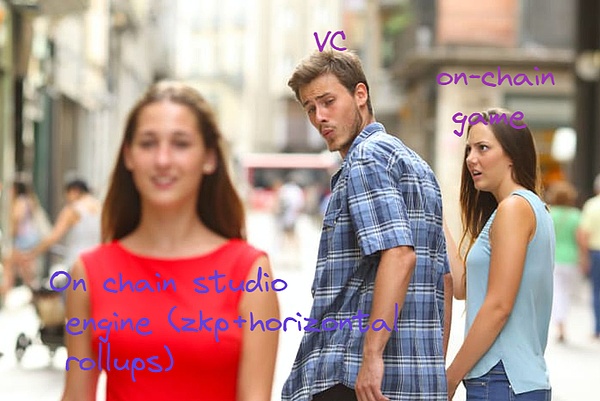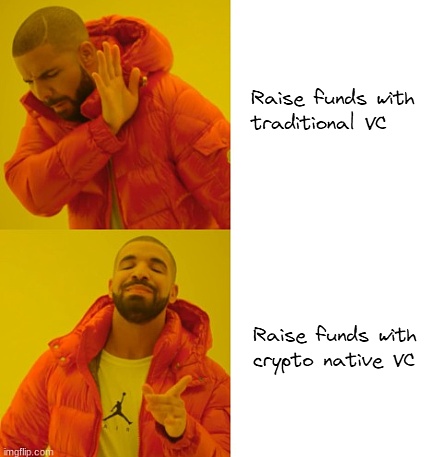As venture capital (VC) firms become increasingly interested in fully on-chain games and autonomous worlds, I find myself thinking: Raising money as a team building fully on-chain games What does funding feel like?
One of the benefits of operating in such a small ecosystem (especially one where everyone is very open) is the ease with which you can talk to the team.
So, to help answer my questions, I contacted several well-known founders of full-chain games, including Tax Cuts of Primodium, Sebastien Guillemot of Paima Studios and Stokarz of Minters.
Today, I’ll share the key takeaways from these conversations and provide insight into the state of the on-chain full-game venture capital market from a builder’s perspective.
Without further ado, let’s get straight to the point!
Investor interest continues to grow
Until recently, It is almost impossible to raise funds as a full-chain game project.
As Stokarz said when describing his experience trying to do this for Minters:
“It’s very difficult for a gaming company to be entirely on-chain to raise capital in 2022. Investors don’t see much value in them. The attitude of some of them is: you guys are Building a casino? The idea of putting games on the blockchain... is hard to fathom.”
However, the tide is turning.
Investor interest in full-chain games is growing, and several factors are driving this shift in sentiment:
1. Some games have pointed the way
like "Dark Forest" on the entire chain The game found product market fit while helping to prove that the industry could create novel experiences.
2. Technology has advanced
This field is developing Significant progress has been made in infrastructure suitable for hosting full-chain games and enabling unique game mechanics.
This includes horizontal rollups, game engines (frameworks), zk proofs, and more.
3. Business models continue to evolve
People pay more attention to Build permanent games and "games as a service" rather than products that only make money at the point of sale (more on that later).
4. Increased awareness
Investors’ awareness of the entire chain To gain a deeper understanding of what's going on in the gaming ecosystem, hackathons help understand this.
This has all translated into increased venture capital activity, with teams such as Proof Of Play, Curio, Argus Labs, Cartridge and Citadel all raising hundreds of millions in 2023 million in funding, with a total value of $54.4 million.
Permanent gaming prevails
I talked to Tax Cuts One big takeaway is that investors are excited about games as a service and "perpetual games."
As mentioned earlier, "Games as a Service" (GaaS) refers to video games designed for continuous updates and content distribution , designed to keep players engaged for long periods of time.
This model allows developers to continuously improve their games based on player feedback, build ongoing relationships with players, and generate recurring revenue through subscription mechanisms or microtransactions .
An example of an OG-level permanent game is the MMO World of Warcraft (WOW), where players pay a monthly subscription fee while receiving regular expansions.
We have yet to see how (or if) this model is implemented in full-chain games.
However, due to its properties, the success of Web2, and the permanence of blockchain, the potential for implementing the GaaS model in fullon-chain games has Help increase the enthusiasm and willingness of crypto-native VCs to invest in the industry.
Raising money is easier if you are building infrastructure

Another common thread in my conversations is, In addition to games, projects that build infrastructure are easier to raise funds.
This approach focuses not only on developing engaging game experiences, but also on the underlying technical framework required to create silky-smooth operations.
Sebastien shared his thoughts on the trend, saying:
"I The feeling about web3 gaming is that it's weird right now. Many VCs see growth in gaming but are hesitant to bet on a single game (or studio) because of the risk, and see the game+infrastructure combination as more Safe bet”.
If we put ourselves in the shoes of a venture capital firm, it’s easy to see why many people think this way.
Investing in infrastructure allows for diversification because the risk is not solely tied to the success (or failure) of one particular game or team , but scattered across multiple games or even entire ecosystems.
For more context, Sebastien compared the role of game engines across the chain, which I found interesting:
“Our main argument about Paima is that the fullchain game engine is more like a DEX aggregator than a DEX. That is, < strong>The more ecosystems you support, the more liquidity (active players) you have. [This is more like] a DEX aggregator, [than] a DEX."
Key Points and Insights
General Generally speaking, according to my research, the risk market for games on the entire chain seems to be slowly heating up.
Although investor interest is not strong, it is growing, especially for projects aimed at building permanent gaming and infrastructure
strong>.
This is very encouraging.
However, there are still clear challenges, such as the implementation of the GaaS model.
Also, (of course) not everyone can build infrastructure outside of gaming.
Finally, I would like to leave you with some actionable advice for potential founders.
One of them is: If you're going to raise money, do it from crypto-native VCs.
As Tax Cuts says:
“It’s best to build from understanding The protocol’s crypto-native companies raise capital, rather than traditional venture capital firms (or gaming-specific companies, unless they have [dedicated] crypto funds).”

Original link: https://wasd.mirror.xyz/qH0tRoGWB-kWEyM9SU4i7XOEXwug4GPGLvKKhrZUNik
 Huang Bo
Huang Bo









